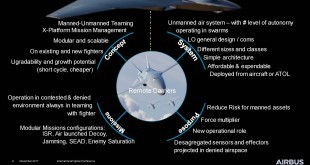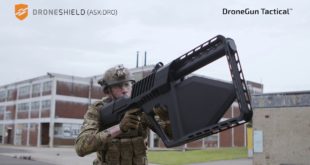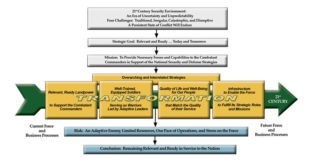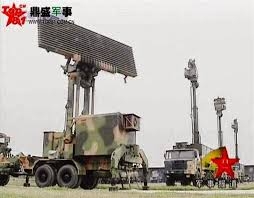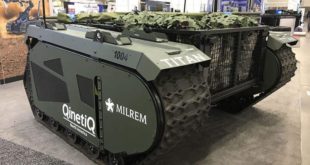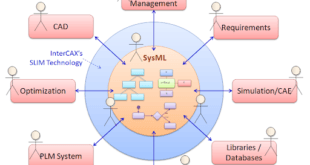US military is facing increasingly Anti-access /Area denial environment, a set of overlapping military capabilities and operations designed to slow the deployment of U.S. forces to a region, reduce the tempo of those forces once there, and deny the freedom of action necessary to achieve military objectives . Unmanned Air …
Read More »US Army xTechSearch competitions developing innovative dual use technologies for next generation military systems
The 2015-2018 U.S. Department of Defense Agency Strategic Plan underscores the criticality of innovation in its strategic goal to “achieve dominant capabilities through innovation, technical excellence, and defense institutional reform.” Echoing this priority, Department of Defense (DoD) leaders frequently point to accelerated innovation across the department as critical to putting …
Read More »DARPA thrust in Terahertz electronics for future military wireless and sensing
The terahertz (THz) frequency band is a fascinating and relatively unexplored part of the larger electromagnetic spectrum (EMS). The terahertz frequency range, lying between electronics and optics (300 to 3000 gigahertz frequencies), can be disruptive force in sectors as diverse as from medical imaging, biological research, pharmaceutical monitoring, manufacturing and quality …
Read More »Rugged, Sensitive Optical Fiber sensors for military sonars and monitoring military assets and earthquakes
The fiber optic sensors also called as optical fiber sensors use optical fiber or sensing element. These Sensors can measure a large variety of parameters, such as temperature, pressure, strain, refractive index, vibrations, displacements, bending, loading, and liquid level or concentration of chemical species. Fiber optic sensors have become a …
Read More »Rising employment of Unmanned and Autonomous underwater vehicle (UUV & AUV) in Naval ASW & MCM missions
UUVs—submersible unmanned vehicles—are divided into two categories: remotely operated underwater vehicles (ROVs) and autonomous underwater vehicles (AUVs). ROVs are controlled and powered by a person or crew on either land or neighboring craft via an umbilical or using remote control. The cables enable maneuverability of the ROV, allowing it to travel …
Read More »US Army’s Network strategy for Army Network Modernization includes Dynamic Transport, Computing and Networked Edge capability
In 2016, The Army’s chief information officer announced the release of the Army’s new, long-term, network strategy called “Shaping the Army Network (2025-2040).” The document discusses the projected operational environment and required capabilities to set the context for what the future network must enable; describes what the network of 2025 …
Read More »Passive and active multistatic radars capable of detecting stealth fighters and guiding missiles to destroy them
Stealth technology has proven to be one of the effective approaches to enhance the survivability of Aircrafts. Aircraft/helicopter designers are making them stealthier by reducing their signatures; viz. visual, aural, infrared (IR), and RADAR cross section. Advancements in stealth technologies, as demonstrated by the very low RCS of stealth aircraft …
Read More »Global Military Ground Vehicle Propulsion System trends and Market
A military vehicle is a type of vehicle that includes all land combat and transportation vehicles, which are designed for or are significantly used by military forces. Many military vehicles have vehicle armour plate or off-road capabilities or both. A military truck is a vehicle designed to transport troops, fuel …
Read More »DOD Digital Engineering Strategy based on Model-Based Systems Engineering (MBSE) for Military System of Systems (SOS)
A system is defined by NASA as a construct or collection of different elements that together produce results not obtainable by the elements alone. Systems Engineering (SE) is defined as: The process by which a customer’s needs are satisfied through the conceptualization, design, modeling, testing, implementation, and operation of a working …
Read More »Next generation non-lethal weapons being developed with ehnaced capability, longer range and lower risk of injury
The United States armed forces expect to encounter a variety of military operations in the future that are unconventional in nature. Known as Military Operations Other Than War (MOOTW) they include such things as peacekeeping, humanitarian relief, covert operations, and hostage rescue. The unconventional threats is further enhanced as …
Read More » International Defense Security & Technology Your trusted Source for News, Research and Analysis
International Defense Security & Technology Your trusted Source for News, Research and Analysis
